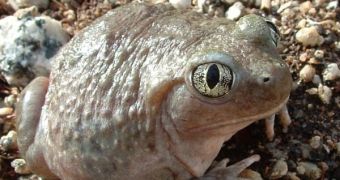Another genetics theory, the one that states the fact that genes can only be passed down from generation to generation (vertically) and not from individuals to unrelated individuals (horizontally), is about to become obsolete, as new research, covering the genome of some 26 different species, shows that some portions of DNA are common between them.
This could seem absolutely normal, but there's a small glitch – it's not possible. The DNA an organism uses to replicate and grow is passed via parental lines. Of course, the genes and transposons could mutate into something else. The whole idea of evolution is constant change, as far as Charles Darwin was concerned anyway.
But this new discovery seems to put that in question, because researchers say that some species, totally unrelated to each other, may have hit the "evolutionary" fast line at about the same time in history, approximately 30 million years ago. Couple this with the fact that they all seem to have received the DNA hAT transposon at the same time, and you get an outside influence in the evolutionary path. No wonder scientists named the parts of DNA alien invaders.
What's even more curious is that this migration of DNA happened between mammals, which was previously thought to be, if not impossible, very rare at least. Bacteria have this ability, but they are simple organisms, mostly unicellular. Animals however have a more complex structure and the chances of this happening are very slim, says Greg Hurst, an evolutionary biologist at the University of Liverpool.
The only possible explanation geneticists could come up with so far is that the chunks of DNA somehow used viral cells as a means of transportation to other species. Once in new hosts, it began replicating and, in some cases, came to build more than 99,000 copies of itself, which is very much for simple animals, such as amphibians. Scientists believe that, because of the influence this transposon had, many species died 30 million years ago, on at least two continents.
It's easy to guess that foreign DNA introduced in an already existing living creature can cause some pretty bad damage. Researchers say that this phenomenon could account for the disappearance of several mammal species all those years ago. As a possible culprit, the bat seems to fit the profile best, because of the huge amounts of viruses it can carry. Active strands of DNA could have been passed on throughout bat populations in the past, which could, in turn, spread it to several animal species.
Though it caused some pretty bad damages, researchers say that the transposon also benefited several species, which could have evolved faster for short periods of time, "skipping" ahead on the evolutionary path. However, up to this point, no one has a clue as to where this highly active chunk of DNA came from or how it was transmitted to so many different species.

 14 DAY TRIAL //
14 DAY TRIAL //